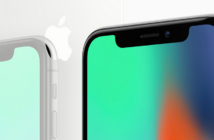By Eric Jensen, head of IoT product management at Canonical
2020 is seen as the year of true 5G adoption. It’s the same year that the number of connected devices will exceed 30 billion. As we enter a new age of ‘hyper-connected IoT’, there is a growing need for bandwidth as smarter products use the network in new and demanding ways.
Devices at the edge are no longer primitive sensors, but advanced computers in their own right: autonomous vehicles, gateways, robots, drones and everything in between. The ability to process vast amounts of data will require not just a faster connection, but a fundamental shift in how we approach all forms of technology.
5G is a pace setter
GCHQ chief Jeremy Fleming said recently in The Times of 5G that, “we have entered a new technological age, one that will fundamentally change the way we live, work, and interact with each other”.
We’ve moved beyond simple notions of speed. To the average consumer, 4G allows us to do everything we want most of the time; sift through social media, stream shows, and speak to friends and family over a cellular network. The strength of 5G lies in its increased capacity and reduced latency times. 5G will be the most reliable means of processing compute; the benchmark for more advanced technologies.
When it comes to the Internet of Things, 5G’s reliability opens up a seemingly infinite number of new uses. Data collected at the edge can be understood and actioned in near real time. Multi-gigabit-per-second speeds and one millisecond latency times will ensure more data than ever can be quickly and easily utilised, overlaying intelligence onto every device on the edge.
IoT innovation with 5G
The reliability of 5G will help optimise industry performance in automotive, agriculture and logistics. It is the relationship between 5G and IoT, however, where the next generation of innovative solutions will arrive from.
Autonomous vehicles remain one of the most talked about examples with data collected from a vast array of sensors, including speed and rain gauges, GPS and external cameras. With the advent of 5G, this information will become indispensable, as businesses and cities overlay other technologies – such as artificial intelligence and machine learning – onto the real time data outputs and revolutionise how we move. Improving traffic flows, identifying manufacturing defects automatically, and supporting passenger safety can all be realised through the harmony of 5G and IoT.
It is not impossible to imagine other connected devices expanding the future driving experience as well. From experimental biometric chips, which allow communication between humans and vehicles, to virtual reality (VR) and augmented reality (AR) windows that visually transport those travelling long distances to their destination.
Partnering robotics with 5G, meanwhile, could revolutionise healthcare and support more advanced techniques. Real time rendering of virtual models will see telesurgery become a viable solution, ensuring access to treatment is not hindered by geography. A human doctor could perform an operation on a 3D construction, while a robot carries out the same procedure on a patient somewhere else in the world.
Cars and robots show the benefits of 5G intersecting IoT, but both raise questions around security. Previous generations of mobile networks were designed with consumers in mind, meaning security was a somewhat less critical consideration. As more businesses take advantage of the speed, however, and migrate their operations onto 5G infrastructures, the need to protect the network and edge device becomes imperative.
Take into account that 5G supports network slicing – the ability to create multiple virtual networks on top of one platform – and security will have to drop its one-size-fits all mantra. In the case of smarter vehicles, hackers have multiple access points to exploit and a failed network could have serious repercussions. Connected robots will also need the strongest protections possible, as their ability to interact directly with the physical world makes them dangerous and attractive targets for criminals.
Solving security issues
The good news is that 5G capabilities will enable new types of security services as well. Software can now support ongoing health checks, especially when coupled with the increased bandwidth of 5G, allowing updates and rollbacks to flow in a timely manner. That’s one way to help futureproof connected devices with a next generation connection, but what about when the network itself becomes the security measure?
5G is expected to roll out over a radio frequency like previous iterations, but other mediums have been touted in order to bring an extra layer of security to the network. LiFi is a disruptive technology with the power to unlock the potential of the IoT in a safe manner. By transmitting data over light instead of radio waves, LiFi could ensure the validity of the connected home, with IoT devices only able to access the network when in direct contact with the light signal. It’s an interesting use case for 5G and one that maximises its speed and capacity, without the added security risks. Smart homes and future offices could be almost unrecognisable with secure connected devices at their hearts, constantly evolving layouts and ecosystems all controlled by real time data.
5G will become central to how businesses and societies operate. The shift has been compared to moving from a typewriter to a computer. Alongside IoT, 5G is set to bring a new generation of value and innovation to a variety of markets, delivering what many are hailing as the fourth industrial revolution. As technologies, the combination of the two will see a huge number of theories brought to life and the realisation of existing potential.





